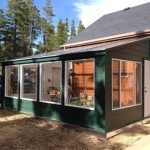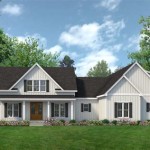Small House Plans: Exploring Free Options and Design Considerations
The appeal of small house living continues to grow, driven by factors such as affordability, environmental consciousness, and a desire for a simpler lifestyle. Acquiring suitable house plans is a crucial first step in realizing this dream. While custom architectural designs offer tailored solutions, readily available free small house plans can provide a valuable starting point for designing a compact and efficient dwelling.
Accessing free small house plans online requires careful consideration. The quality and completeness of these plans can vary significantly. It is essential to scrutinize the plans for accuracy, structural integrity, and compliance with local building codes. Often, free plans serve as inspiration or a basic framework, necessitating further refinement and adaptation by a qualified architect or building designer.
This article explores the availability and potential uses of free small house plans, highlighting critical factors to consider before utilizing such resources. It delves into the types of designs commonly found, the potential benefits and drawbacks, and the necessary adaptations required to ensure a safe and functional living space.
Understanding the Landscape of Free Small House Plans
The term "free small house plans" encompasses a wide range of options. These can originate from various sources, including architectural firms offering introductory designs, DIY websites, and open-source design repositories. The complexity and detail provided vary greatly. Some plans may only offer basic floor layouts, while others include elevations, foundation details, and even basic material lists.
It's critical to understand the limitations inherent in free plans. They are often generic and not specifically tailored to individual site conditions, climate considerations, or personal lifestyle preferences. Typically, free plans lack the detailed structural engineering necessary for ensuring the building's stability and adherence to local regulations. Therefore, relying solely on free plans without professional review and modification is generally inadvisable.
The availability of free plans should be viewed as an opportunity for preliminary exploration and conceptualization rather than a complete, ready-to-build solution. They can serve as a springboard for discussions with architects or designers, allowing homeowners to articulate their needs and preferences more effectively. By presenting a tangible starting point, free plans can streamline the design process and potentially reduce initial consultation costs.
Here are some examples of what you might find:
This is an example of a basic 2-bedroom, 1-bathroom plan. The floor plan shows the layout of the rooms, but doesn't include details like electrical wiring or plumbing.
This is an example of a tiny house plan, usually under 500 sq ft. Compact and efficient use of space is key in these designs.
Key Considerations When Evaluating Free Plans
Before committing to a free small house plan, several crucial aspects must be carefully evaluated. These considerations ensure that the chosen plan is suitable for the intended purpose and can be adapted to meet specific requirements.
Site Suitability: Free plans are unlikely to account for the specific characteristics of the building site. Soil conditions, topography, orientation to the sun, and prevailing wind patterns all influence the design and structural requirements of a house. A plan designed for a flat, well-drained site may be entirely unsuitable for a sloping or unstable terrain. Furthermore, the orientation of the house should be optimized to maximize solar gain in colder climates and minimize it in warmer regions. This involves considering the placement of windows and overhangs to control sunlight exposure.
Local Building Codes and Regulations: Building codes are designed to ensure the safety and structural integrity of buildings, as well as to protect public health and welfare. These codes vary significantly from region to region, encompassing aspects such as foundation requirements, structural load calculations, fire safety measures, and accessibility standards. Free plans may not comply with the specific codes in a given locality, requiring modifications to ensure compliance. Failure to adhere to building codes can result in costly delays, fines, or even the demolition of the structure. Therefore, it is essential to consult with local building officials to determine the applicable codes and regulations before proceeding with construction.
Structural Integrity: The structural integrity of a house is paramount to its safety and longevity. Free plans often lack the detailed structural engineering calculations necessary to ensure the building's ability to withstand loads from wind, snow, earthquakes, and other environmental factors. A qualified structural engineer should review the plans to assess the structural adequacy and recommend necessary modifications. This may involve reinforcing the foundation, strengthening the framing, or adding shear walls to resist lateral forces.
Energy Efficiency: Modern building practices prioritize energy efficiency to reduce energy consumption and minimize environmental impact. Free plans may not incorporate energy-efficient design features, such as proper insulation, high-performance windows, and efficient heating and cooling systems. Upgrading the plans to incorporate these features can significantly reduce energy bills and improve the overall comfort of the house. This may involve adding insulation to walls, ceilings, and floors, installing energy-efficient windows and doors, and selecting efficient appliances and HVAC equipment.
Accessibility: Consider accessibility needs, both current and potential future requirements. Designing for universal accessibility, which allows people of all ages and abilities to use the space comfortably, is a worthwhile investment. This may involve widening doorways and hallways, providing ramps or elevators for access to different levels, and installing grab bars in bathrooms. Even if accessibility is not currently a concern, incorporating these features can increase the long-term value and usability of the house.
Adapting Free Plans for Optimal Use
Since free plans often serve as a starting point, adaptation is typically necessary to create a functional and safe living space that meets individual needs and site conditions. The extent of adaptation will depend on the quality and completeness of the original plan and the specific requirements of the project.
Professional Review: The first step in adapting a free plan is to have it reviewed by a qualified architect, building designer, or structural engineer. These professionals can assess the plan's suitability for the intended site and identify any necessary modifications to comply with local building codes and ensure structural integrity. They can also provide guidance on optimizing the design for energy efficiency and accessibility.
Modification of Floor Plan: The floor plan may need to be modified to better suit the homeowner's lifestyle and preferences. This may involve adjusting the layout of rooms, adding or removing walls, or reconfiguring circulation patterns. Consider the flow of traffic through the house and how the different spaces will be used. Ensure that the floor plan maximizes the available space and provides adequate storage.
Exterior Design Adjustments: The exterior design of the house may need to be modified to complement the surrounding environment and reflect the homeowner's aesthetic preferences. This may involve changing the roofline, adding or removing windows, or altering the exterior cladding materials. Consider the architectural style of the neighborhood and choose materials that are durable and weather-resistant.
Updating Structural Details: The structural details of the plan may need to be updated to meet local building codes and ensure the building's stability. This may involve reinforcing the foundation, strengthening the framing, or adding shear walls. Consult with a structural engineer to determine the necessary modifications.
Incorporating Energy-Efficient Features: The plan should be updated to incorporate energy-efficient design features, such as proper insulation, high-performance windows, and efficient heating and cooling systems. This will not only reduce energy bills but also improve the overall comfort of the house.
Material Selection: Choose building materials that are durable, sustainable, and appropriate for the climate. Consider the environmental impact of the materials and select options that are locally sourced and have a low carbon footprint. Also, consider the long-term maintenance requirements of the materials and choose options that are easy to maintain.
Permitting and Approvals: Before starting construction, it is essential to obtain all necessary permits and approvals from local authorities. This may involve submitting the modified plans for review and inspection. Ensure that the plans comply with all applicable building codes and regulations. Failure to obtain the necessary permits can result in costly delays and fines.
Ultimately, free small house plans offer a viable starting point for homeowners seeking affordable housing solutions. However, they should be approached with caution and adapted responsibly. Engaging qualified professionals to review and modify the plans is crucial for ensuring safety, compliance, and functionality, transforming a simple blueprint into a comfortable and sustainable home.
The following image shows an example of how a simple floor plan can be customized:
The original floor plan might have one bathroom, but the homeowner can customize it to add another one, or change the kitchen layout for better functionality.

27 Adorable Free Tiny House Floor Plans Cottage Small

27 Adorable Free Tiny House Floor Plans Craft Mart

Free Small House Plans For Old Remodels Floor Bedroom

Simple House Plans Free Small Nethouseplans

Free Small House Plans Home Design And Planos De Casas Pequeñas Chicas

Small House Plans 7x12 With 2 Beds Free Design Plan

10 Free Small Home Plans Thehomesteadingboards Com

Small House Plans 5x7 With One Bedroom Hip Roof Samphoas Plan

Barrier Free Small House Plan 90209pd Architectural Designs Plans

Small House Plans 7x12 With 2 Beds Free Design Plan








